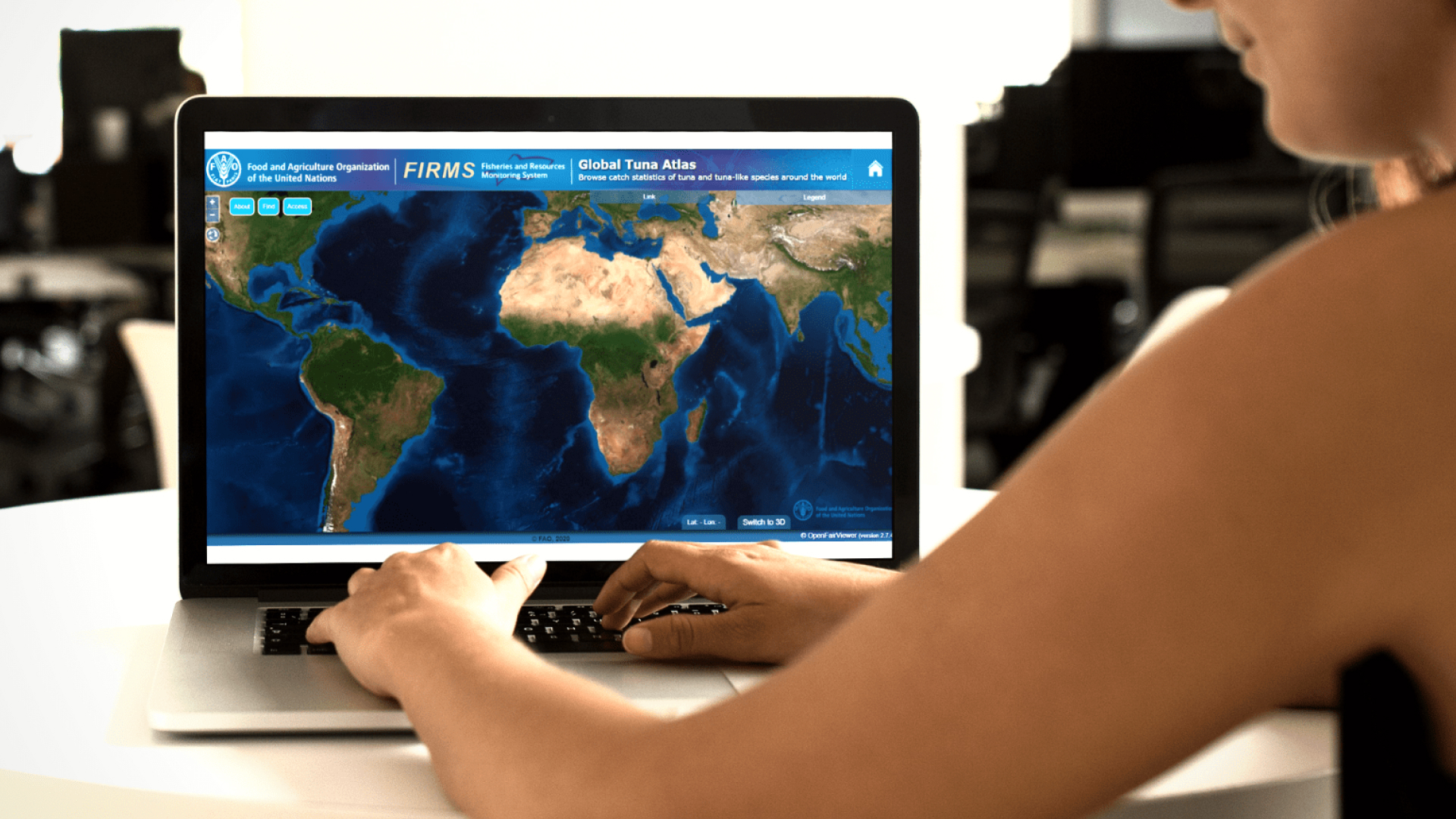The last version of the Global Tuna Atlas (GTA) was released in May 2022 by FIRMS on Zenodo, also made accessible by the Information and Knowledge management team (NFISI) of FAO's Fisheries and Aquaculture Division. The objective of FIRMS is to provide high-quality public information on the global monitoring and management of fishery marine resources, with the GTA focusing on a global, authoritative, and standardised overview of historic tuna and related fisheries catch.
Over the years, this Atlas has been updated and improved by using and refining virtual research environments to meet specific community needs through support from a range of H2020 projects including Blue-Cloud and the software components of the Blue-Cloud Fisheries Atlas Virtual Lab. The Global Tuna Atlas demonstrates how the interoperability of fisheries data can be achieved, not only for tuna, but for a wide range of fisheries and related domains.
The Atlas offers a comprehensive view over the catches of fisheries targeting tuna and tuna-like species - going as far back as 100 years in some areas. Including bycatch, the Atlas disseminates data on 50 common species (however featuring information for up to 150 species in total). The aim was to release an open and FAIR principles based product, and this was achieved by complying with Dublin Core and DataCitestandards for general discovery and access services (for DOI's), as well as ISO-TC211 / OGC standards for geographic information management and CWP standards for fisheries data management.
New Tuna datasets for the Global Fisheries Atlas
With the help of Blue-Cloud2026, new versions of the FIRMS Tuna Atlas datasets have been generated and published on Zenodo. These datasets give updated global statistics of Tuna Fisheries are the cornerstone used to build new datasets (upper levels of processings) and applications (dashboards) expected by scientists and decision makers to better manage these key marine resources. Both data and code are open. Datasets are generated by a workflow (R programming language) that has been built, executed and can be reproduced in the Global Fisheries Atlas Virtual Laboratory of the Blue-Cloud infrastructure. This is a good step forward and a good demonstrator for those looking to make fisheries data FAIR.
Learn more about the Global Fisheries Atlas Vlab!
